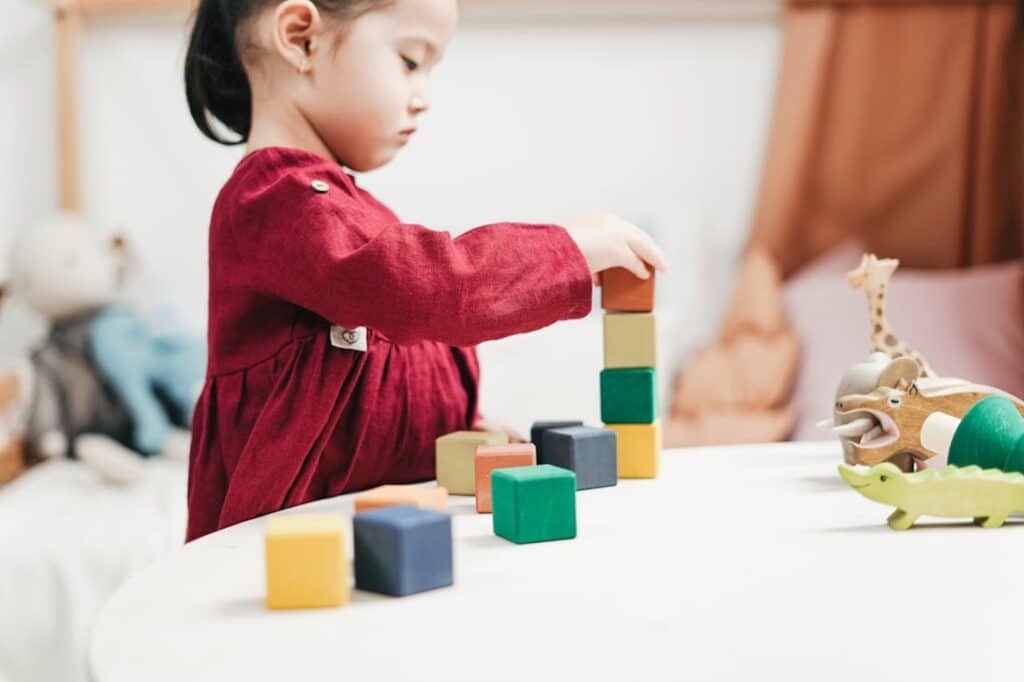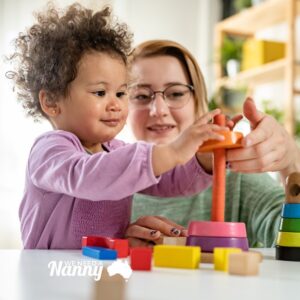Children face challenges every day, which is why it is so important for children of all ages to develop problem-solving skills.
Not many individuals know how to teach problem-solving skills to children and teens. That is why it is important to know which methods can help children in certain age groups.
It is vital to guide children to solve problems for themselves.
The capabilities of managing emotions, thinking creatively, and finding solutions develop in time. However, as a parent or caregiver, here are a few skills that you can use to teach your child problem-solving methods.
6 Strategies to Teach Problem-Solving Skills to Kids
Problem-solving strategies are techniques that students and parents can use to solve creative issues on their own. The techniques can be implemented in various ways to solve a variety of problems children or students may face.
1. Identify the problem
The first step to solving a problem is to identify the problem. It will help the parents and children to understand the problem. Thus, they can talk about finding a suitable solution. When solving a child’s problems, it is always best to stay calm, and not react. Children often go through difficult times to find a solution to their problems.
2. Use Emotion Coaching
Before stepping into problem-solving, young children must first enter a mindset of controlling their emotions. It is difficult for small children to logically consider any solutions when they are throwing a tantrum.
The Emotion coaching process teaches kids that there are no bad emotions. All emotions whether positive or negative are acceptable. Even emotions such as anger and frustration can teach valuable life lessons.
What matters most is how we respond to our emotions.
The following steps is a good example to help kids deal with emotions:
- Name and validate your emotions – As a parent, you must show understanding as to why your child is upset.
- Process Emotions – Help a child to keep calm and think about their emotions and feelings.
- Problem-Solving – Now you can brainstorm some solutions to the problem with the child.
3. Model problem-solving
Younger children, especially pre-school children, always focus on their parents as teachers. You have the chance to show your child how to deal with situations in life that go wrong. Children receive real-life examples of problem-solving by following your model as an adult.
4. Ask for Advice
Why not tell your child about your problems? It teaches them that mistakes can sometimes occur in their lives. Children get a chance to use your example to learn problem-solving. Plus, you indicate that you value their ideas, helping them gain confidence.
5. Don’t Provide “The Answer”
It is always best to let the child struggle a bit, learning from their mistakes and experiences. Negative consequences often help with the thought process towards more good examples to find solutions. Depending on your child’s age, there are some age-specific strategies that you can implement. These strategies or activities can help children of different age groups solve problems.
6. Put the Solution into Action
Once there is an agreement on a solution, plan what will happen next. Make sure your children understand the natural consequences of their actions. Often negative consequences may be a result of the solution. However, this is an opening to focus more on potential solutions. When you invest yourself in solving problems with your kids, they feel that you value them. You send a message that you value their input in decision-making. It is an excellent method to help your child bond with you.
Teaching Problem-Solving Skills Using Activities for Children
Using the problem-solving strategies as a basis, there are many activities to support the strategies. Using activities and daily routines can help children to develop their own skills in solving problems.
Toddlers and Preschoolers
Teach them Problem-Solving Steps
You can create and follow an easy process for your children to solve their own problem. You can teach them to practice the process when solving any problems that may arise. For Example:
- How am I feeling at the moment?
- What exactly is the problem?
- What are some possible solutions?
- What would happen in attempting every solution?
- Which solution seems the best one to try?
The process takes consistent practice to eventually find results that work.
Ask Open Ended Questions
It is so easy to give a child what they need quickly, and effectively. However, all this does is hinder the individual from learning to solve their own problems. To get a quick response rather try to ask open-ended questions, to solve problems. Here are a few examples:
- How can we work together and solve this?
- What did you learn from the Experience?
- What part was easy, and hard?
- How did you do that, or work that out?
- Tell me more about your creation, and idea…?
By asking open-ended questions it ultimately improves the child’s ability to think critically and creatively.
Problem-Solve with Arts and Crafts
Arts and Crafts is an excellent method to teach young children to solve their own problems using creativity. Provide them with clay, markers, paper, cardboard, and other supplies. Crafting is another form of play that can teach kids to solve problems using creativity. Leave them to come up with their creative ideas independently.
Building Toys
If you give small children blocks or Lego blocks, they create aesthetically pleasing designs. These playsets help them to think creatively. In turn, you can make it more challenging by requesting them to build certain objects.
Primary School Children
Break Down Problems into Chunks
This strategy encourages children to break down challenges into less overwhelming parts. Essentially it helps to encourage a child to tackle and manage the problem at their own pace. For example, the child is distracted by friends in class, does not complete homework, and gets low grades. Each of these “chunks” can be identified, and dealt with separately.
Problem Solve Using Prompts
A fun and effective activity is to use materials to solve an unusual problem.
You can provide them with cotton balls, popsicle sticks, tape, and other materials. Ask them to do the following
- Create a game with three rules.
- Create a home for pixies.
- Make a communication device for two people.
It might take multiple attempts for them to succeed, but in the end practice critical thinking.
Brainstorm possible solutions to the problem
Give your child ideas on how to solve their problems. Brainstorm with them and use sensible choices. Never judge or debate them, but rather guide them towards solutions.
Problem-Solve with Creative Play
Free play, or creative play is one of the best methods for kids to solve their problems. Engage them in activities or games that spark their interest. Use this to explain positive and negative behavior and thoughts. For example. Role play allows them to dress up. Ask why they dressed that way. Ask them what they think is the best way to dress.
Use everyday moments
Try to use everyday situations to teach problem-solving skills. Everyday normal circumstances provide ample materials for practicing problem-solving skills. Situations in the house, in the supermarket, during meals, or even baths are ideal problem-solving examples.
Take Advantage of Natural Curiosities and Interests
Parents and teachers can give children provocations. The provocation allows them to experience an event or interest that expresses their desire. This method can help you support your child in problem-solving.
Teenagers
Play Chess
Games are an excellent method for teenagers to develop problem-solving skills. It helps teenagers to solve problems they face independently, which is an important skill. Chess is a game with so many benefits:
- It encourages critical and creative thinking.
- You must implement an analysis of the board.
- It involves recognizing patterns.
- It is a competitive sport.
There are online versions of the game, as well as the original chess board seats available almost anywhere today.
Encourage Teenagers to Start a Project
Teenagers can start a project on almost everything. The internet provides so many resources that they can use to research or implement their project. Find out what their interest is and help them to start a meaningful project. Whether it is a blog site, YouTube channel, or even something that they want to create and sell. Projects can help to build confidence and teach them valuable skills to solve issues.
Use the SODAS Method
If you are looking for a good game plan for teens faced with a problem, the SODAS method is ideal. When faced with any problem they can use the method to identify the steps of their situation and find a solution in the process. It is an effective problem-solving approach.
- Situation – establish what the problem or situation is.
- Options – Look at a few possible solutions.
- Disadvantages – What are the disadvantages of the solutions?
- Advantages – What are the advantages of the solutions?
- Solution – Weigh them up and choose the best solution.
Problem-Solving Groups
If you have a teen or tween who loves solving problems, why not suggest joining a club? Clubs such as debate and international affairs could help them hone their skills.
All Ages
Problem-Solve with Storybooks
Reading an age-appropriate storybook that includes characters with difficulties is one of the best problem-solving skills methods. Children identify with the character and engage in a similar creative problem-solving process. It will teach children to learn life skills and possible outcomes to solutions identified for their problems. Storybooks are an excellent source for creative and critical thinking development in children of all ages. Ensure that the books you choose offer valuable life lessons, and are age-appropriate for the child.
Ideals can help to develop problem-solving skills in children. It is a unique technique that uses graphic imagery to convey information. An Infographic delivers information by telling a story and using visually pleasing images. This method is ideal for children of all ages, including teenagers. It teaches them to creatively solve problems.
To Conclude
These are just a few proven methods to implement problem-solving skills. You may have a few more methods that work for you personally, if appropriate do not be afraid to teach them to your children. Children generally love to play and explore. Use this to their advantage in the problem-solving process. This gives an open window to teach them to develop creative solutions, in a fun, and creative way.
Children usually develop problem-solving skills on their own by exploring and free playing. Indeed, kids learn best by playing. Things like blocks and puzzles are exceptionally beneficial. They teach your child about problem-solving.
Involved parenting and a supportive environment already help children develop problem-solving skills. Parents should encourage children to make mistakes, and learn from them rather than fear them.










